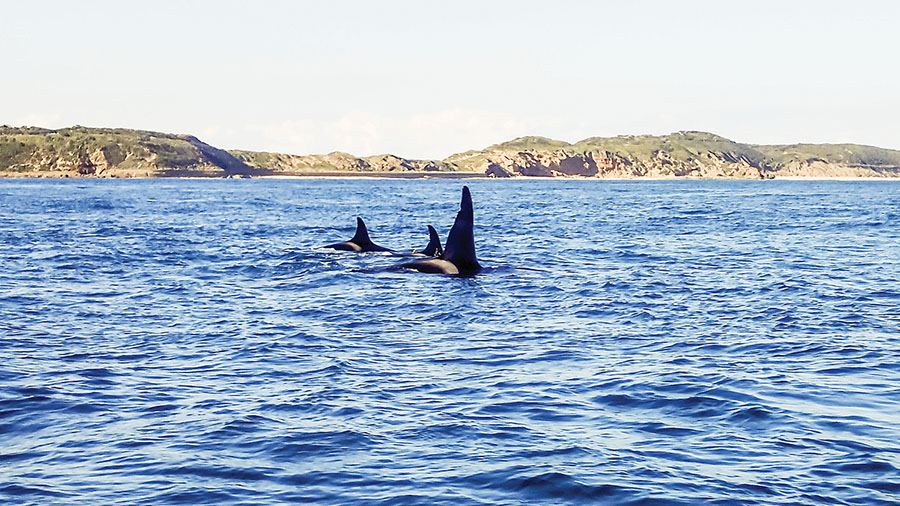
KILLER whales, or orcas, have returned to Port Phillip. A group photographed off Point Nepean included a male known as Ripple, who has been tracked and catalogued by whale watchers since 2005.
Marine wildlife consultant with the Dolphin Research Institute David Donnelly said Ripple was last sighted in Port Phillip in 2015, but has also been recorded in waters off southern NSW, western Victoria and south eastern Tasmania.
“Australian killer whales are highly mobile and on the east coast rarely spend longer than a few hours to a day in any one location,” Mr Donnelly said.
While killer whales were often in Port Phillip and reported sightings were becoming more frequent, Mr Donnelly said they were still regarded as being relatively uncommon.
“This is probably as a result of improved reporting rather than a population increase,” he said.
“They enter the bay from time to time and occasionally travel as far as Mornington.”
He said the killer whales were identified by their fin, saddle and eye patch.
“Using photos with these features we compare with other killer whales to determine an individual. Once an individual has been identified, it is given a unique ID number and added to the Killer Whales Australia catalogue.”
The Hastings-based Dolphin Research Institute this week reported dolphins being seen in Patterson River, Carrum as well the Yarra and Maribyrnong rivers.
Institute executive director Jeff Weir said the dolphins “provide an exciting reminder of Melbourne’s close connection to our wonderful bay”.
“This [the river sightings] is not an everyday event, but we do have sightings in our database going back nearly 25 years. Dolphins have been seen as far up the Yarra as the Chapel St Bridge and in the Maribyrnong far beyond the racecourse.”
Mr Weir said it was believed the dolphins followed migrating bream into the rivers.
“Researchers believe the river visitors are bottlenose dolphins, possibly a mother and calf. Port Phillip is home to resident communities of approximately 120 bottlenose dolphins and more than 30 common dolphins,” he said.
“It is remarkable to have these dolphins living in our backyard, when many coastal communities around the world are losing their resident dolphins.
“It’s natural for dolphins to explore rivers and there is no need to intervene.”
Regulations stipulate that people should not deliberately approach dolphins closer than 100 metres in boats, 300 metres on jet skis and 30 metres for paddlers or swimmers and should keep their speed below five knots.
Dolphin sightings can be reported to: dolphinresearch.org.au or by calling 1300 130 949.
